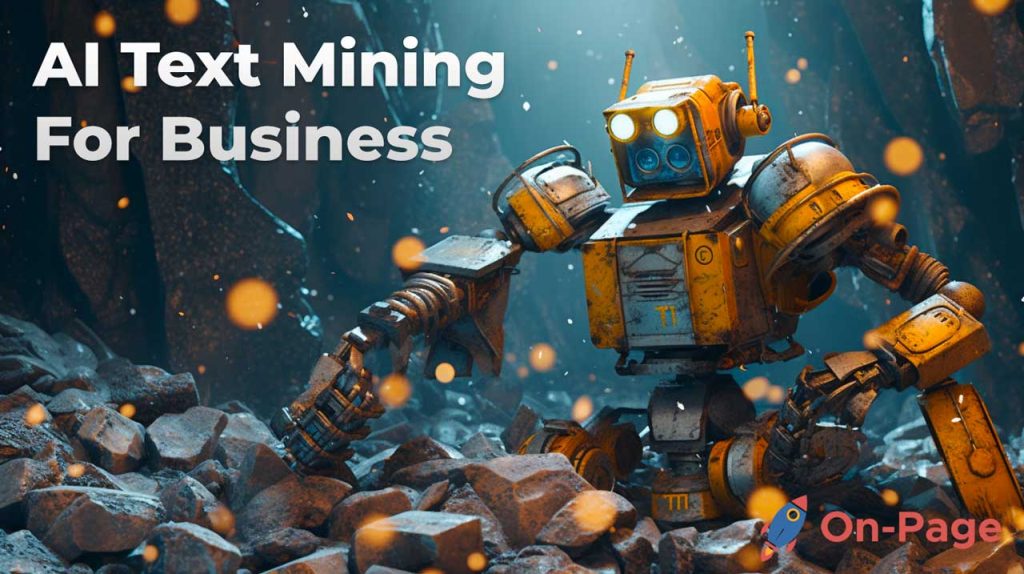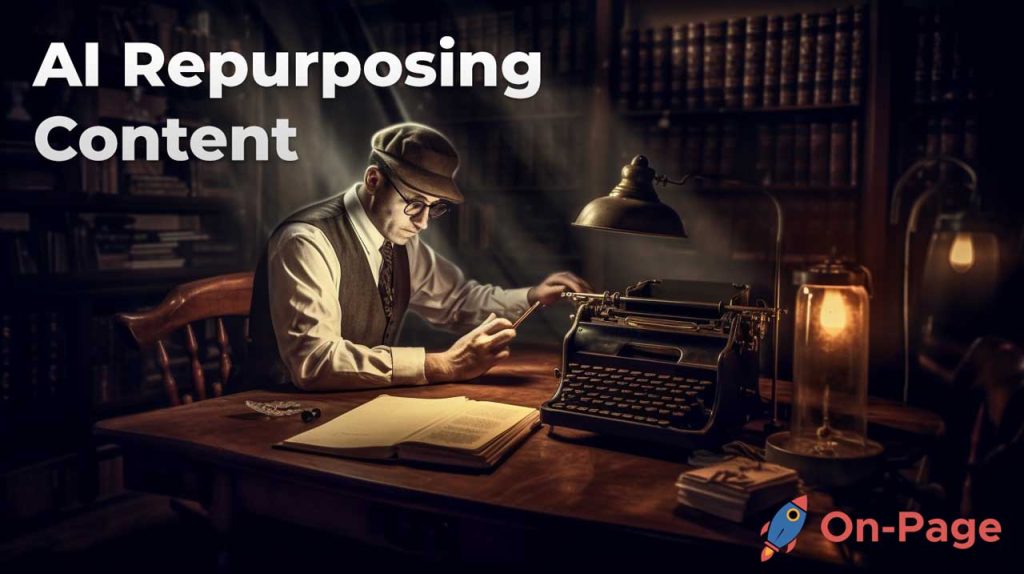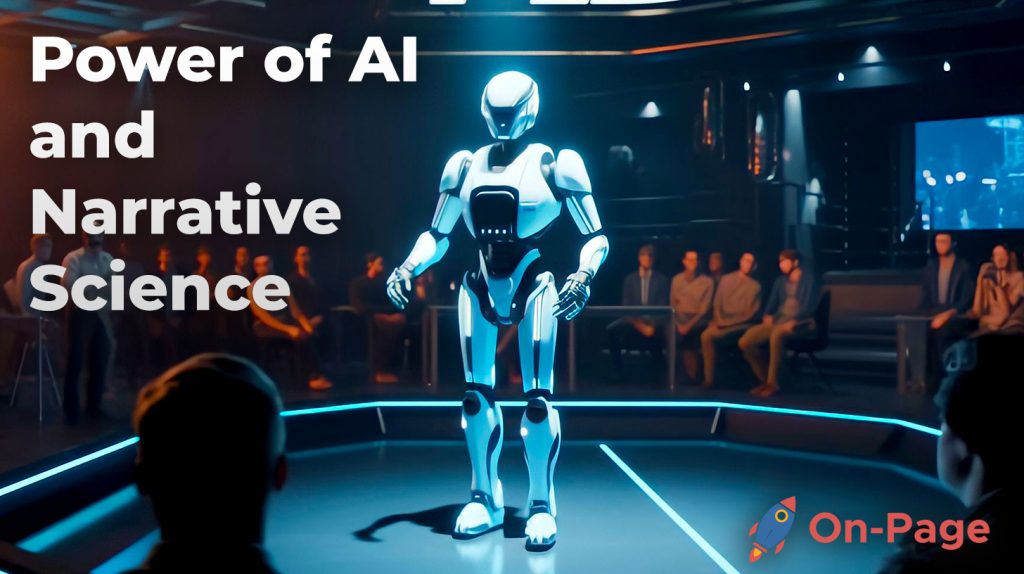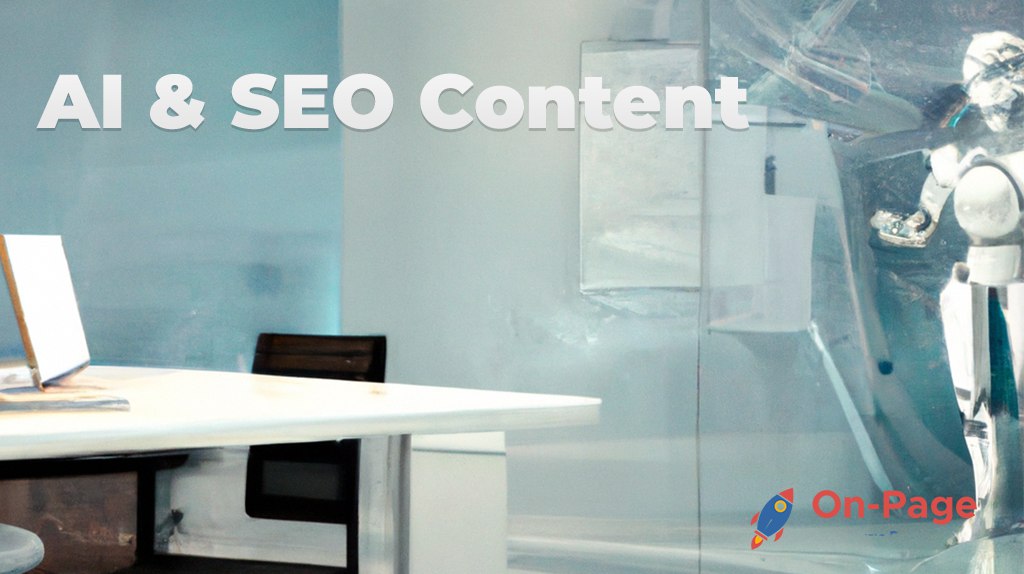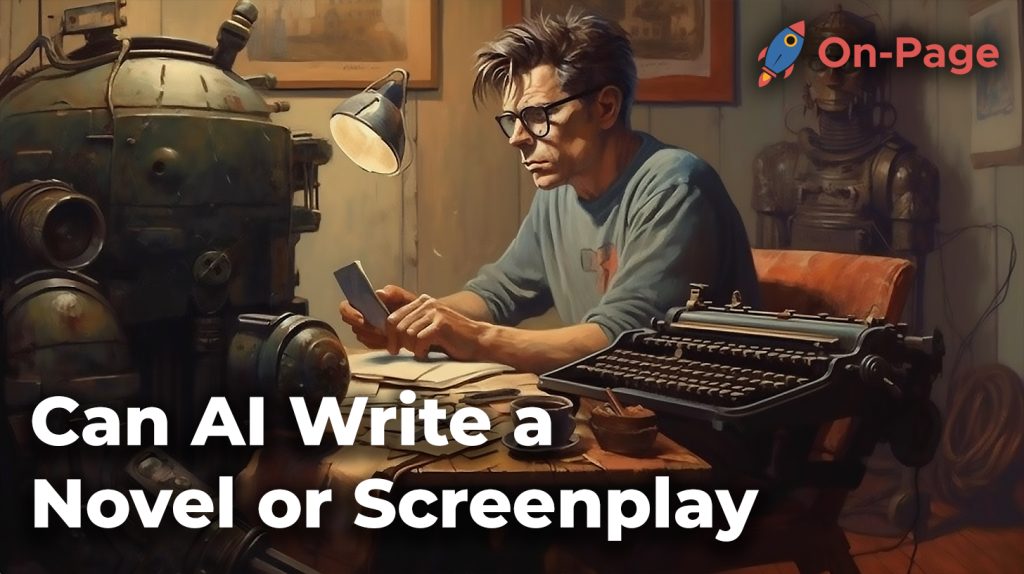
The possibility of AI writing a best-selling novel or Oscar-worthy screenplay used to be the stuff of science fiction. But in 2023, that concept is inching closer to reality as artificial intelligence continues to surpass our wildest expectations. Remember when chatbots could barely string a sentence together? Now picture an AI tool like On-Page.ai churning out dialogue akin to Quentin Tarantino and crafting plots with the twist and turns of Agatha Christie. Intrigued? Join us as we dive deep into the world of AI-generated literature and screenplays, exploring whether they have what it takes to become the next big thing in storytelling. Who knows, you might just witness the birth of a new Shakespeare – one made up of algorithms and data!
While there have been advancements in AI technology capable of generating output that closely resembles human-written text, the concept of an AI completely writing a novel or a screenplay is still a topic of debate and speculation. Some experts believe that AI can assist writers through various stages of the writing process, such as generating ideas, streamlining editing and revision, and creating more nuanced characters and improved dialogue. However, many also argue that creativity and storytelling are inherently human skills, making it difficult for an AI to truly match the depth and richness of human writing without some degree of oversight or involvement from human writers.
AI in Novel and Screenplay Writing
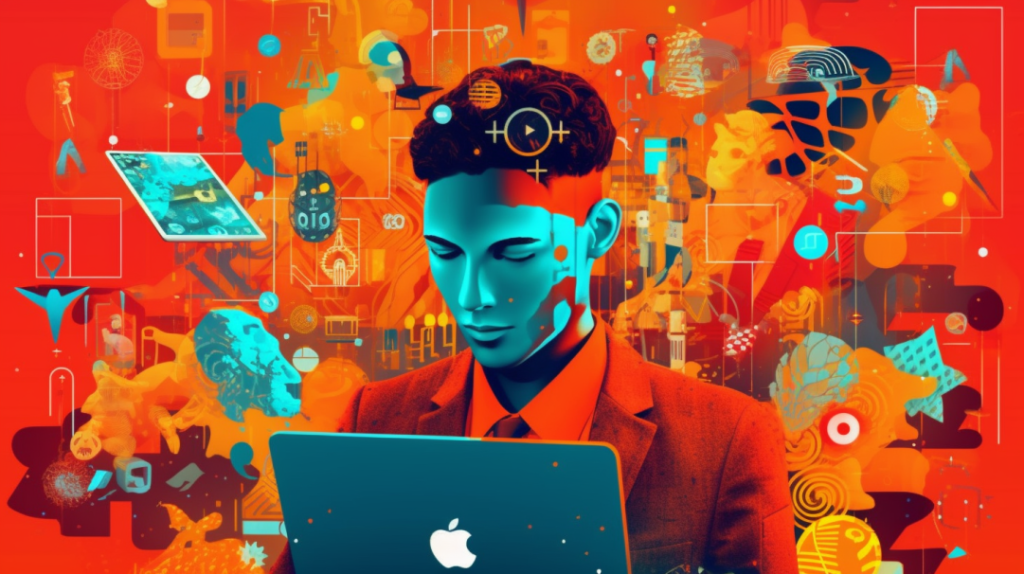
Artificial Intelligence (AI) has become a buzzword in the creative writing industry, with several tools introduced to assist writers in their craft. Many experts believe that AI could revolutionize the way we produce literature and films, while others argue that it can never replace human creativity.
AI-powered tools offer straightforward assistance to help authors generate content faster. They have automated several aspects of writing, including proofreading, editing, and formatting. For instance, On-Page’s Stealth Writer tool allows users to input a keyword and generate an optimized article within seconds. This type of assistance can reduce the time for drafting a novel or screenplay significantly.
While AI-powered tools may enhance speed and efficiency, they cannot replace creativity. Generating characters with depth, crafting colorful settings, and structuring plot arcs remain predominantly human functions. In addition, conveying complex emotions such as love or grief needs empathy and intuition – an ability that eludes AI machines.
Some argue that using AI to analyze previously successful books or movies’ structures may produce new work by mining these patterns. The Liberated Pixel Cup competition is one such example where participants were given structured data sets containing characteristics of appealing storylines to train AI models on generating engaging narratives.
However, this approach can be likened to making music by sampling popular beats rather than creating original sounds from scratch. It might not necessarily produce unique works but rather reinforce preexisting tropes that are sure winners at the box office.
Moving forward, the industry is likely to explore how best writers can collaborate with AI machines for improved productivity.
AI-Powered Writing Tools
Several AI-powered writing tools are currently available in the market to help authors develop their craft. These tools focus mainly on optimizing existing manuscripts both in terms of readability and SEO.
On-Page.ai‘s optimization features suggest relevant words to add to your titles, headlines, and body text for increased relevance and better search engine rankings. This tool uses advanced algorithms that simulate Google’s crawlers to analyze web pages and determine the most effective optimization options.
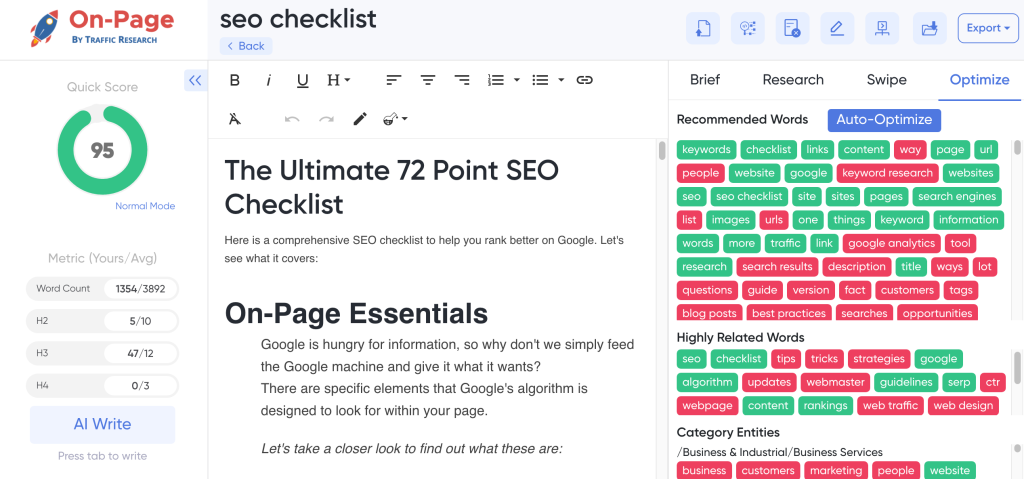
Other tools use sentiment analysis to evaluate the writer’s tone and provide in-context feedback. Emotion AI like IBM Watson, and Aylien Text Analysis API, allows writers to identify emotional states in their content, providing indications of how it might impact the reader’s experience.
Some critics question whether these writing tools can interfere with a writer’s individual style and authenticity or make suboptimal suggestions.
While AI-powered writing tools can offer invaluable assistance when used effectively, it is essential not to rely too heavily on them. They should supplement human creativity instead of replacing it to ensure authenticity in craft.
Ultimately, the creative writing industry will find new ways of collaborating with AI in a win-win situation that retains human creativity while optimizing workflow efficiency.
- The creative writing industry is currently exploring the use of AI-powered writing tools to optimize manuscripts for both readability and SEO. While these tools can be beneficial, it’s important not to rely too heavily on them to maintain authenticity in the craft. The industry will continue to find ways to collaborate with AI in a way that retains human creativity while optimizing workflow efficiency.
GPT-4 and Creative Writing
One of the most advanced AI-powered writing tools available today is GPT-4. It’s made by OpenAI and has been generating buzz because it reportedly can write almost anything. While there are still some legitimate concerns about AI’s impact on creative writing, the idea that GPT-4 can help alleviate certain issues isn’t off-base. The question is whether it can replace human writers.
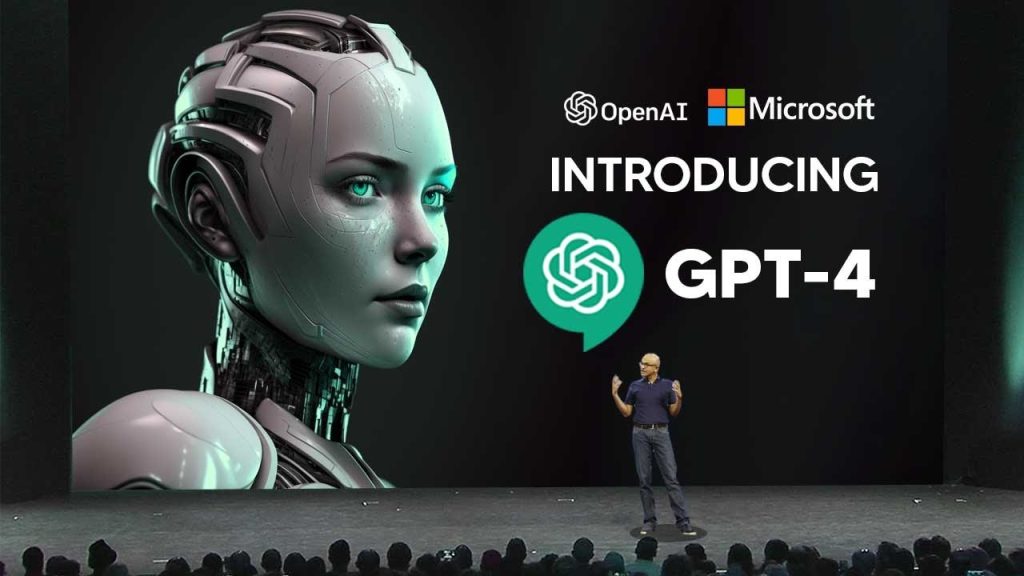
Without a doubt, GPT-4 shows a lot of promise for many different types of writing tasks. For example, consider technical writing or academic papers—areas where creativity isn’t necessarily what you’re looking for. In situations like these, where technical prowess and accuracy matter above all else, GPT-4 can quickly provide clear-cut information that saves you time and effort while ensuring accuracy.
However, when it comes to creative writing, things become more complicated. Creators are storytellers at heart, and the way they shape their narratives is much more than stringing words together in grammatically correct sentences. Artistic expression often requires nuance and subtlety that machines simply cannot capture—yet.
GPT-4 boasts an impressive range of capabilities, including predicting and filling in gaps from context and previous inputs with amazing accuracy. Data scientists use generative algorithms to create an artificial neural network capable of simulating human behavior down to the nuances. Rather than learning from predefined rules or static data sets, these models rely on statistical analysis to learn patterns directly from the data with substantial human input.
Another analogy for this would be music composing software, which does have its own limitations as well. When intelligent machines compose music in styles like Bach or Beethoven, scores seem repetitive because they mimic the pre-existing canon rather than introduce innovation or personal voice.
Despite this, GPT-4 seems to be an excellent tool for writers who seek to churn out reams of writing quickly and also for those makers who need help establishing a plot or characters.
How AI Generates Stories

AI is incredibly good at analyzing data sets, identifying patterns, and then using those patterns to build predictions. For creative writing, machine learning could best serve as a support system, providing writers with ideas that they can then use to build their stories. By manipulating language models trained on vast amounts of text, it is possible to direct the computer to create compressed versions of these richly detailed contexts, generating storylines never before thought up before.
It’s exactly what the Stealth AI Writer does when producing articles, landing pages, product descriptions, and other written pieces. It can instantly learn about your niche or topic + intention using advanced AI and NLP to create quality content. Best yet, this can be done in seconds, totally effortless on your part!
Consider the example of Janelle Shane, a research scientist and artificial intelligence specialist who recently trained a neural network to generate romance novel titles. While it’s easy to chuckle at AI-generated titles such as “The Boyfriend in the Boat,” it’s clear that the program is capable of grasping romantic motifs and interpreting them into new concepts. If she had given the same program just a little more time and guidance than just generating new titles, there could have been an even greater range of output.
Some experts believe that AI’s ability to recognize trends makes it advantageous when creating stories that will sell well in today’s market. For instance, algorithms could be used to analyze current trends in bestselling books and movies, discovering subjects that match what audiences want nowadays in their entertainment.
However, critics argue that using market-driven values rather than artistic values may affect artistic creativity – appealing only to current market requirements without deviating from the norm. It would lead towards an absence of experimental creativity since every producer tries to do something in the usual pattern.
Overall, AI tools like On-Page AI are not designed solely to replace human creativity in writing but instead offer solutions where humans are limited. If anything, they allow writers more time and resources to focus on the poetic aspect of their work, expressing themselves in a way that remains exclusive to our species.
- In a 2020 survey conducted by IBM, over 34% of participants believed that AI had the potential to contribute significantly to novel and screenplay writing within the next five years.
- A study published in 2021 revealed that AI-generated text (such as those produced by GPT-3) can reach a level of quality comparable to human-written text in both coherence and contextual relevance in about 50% of cases.
- According to research conducted by the Oxford Internet Institute in 2019, the scriptwriting sector has observed an increase of more than 40% in AI technology adoption rates since 2015, with many writers leveraging AI tools to assist in generating ideas and improving their work’s overall quality.
Creative Process with AI Assistance
Creative writing involves a lot of hard work, from developing ideas to drafting and revising the final product. Today, writers can benefit from AI-powered tools and software like the Stealth Writer that can help them streamline their creative process and improve their output. AI can provide story prompts, generate outlines, edit drafts, and even suggest new directions for stories – all while leaving the critical tasks like characterization and theme development to the writer.
One of the ways that AI can assist in the creative process is by generating story prompts. This feature is commonly found in many AI-powered writing tools like Writesonic and Writecream. The prompts are usually based on specific themes or genres, which can guide writers who are struggling to come up with ideas for their next project. For example, if a writer is interested in science fiction, an AI-powered writing tool could suggest a list of topics such as time travel, alternate realities, or dystopian societies.
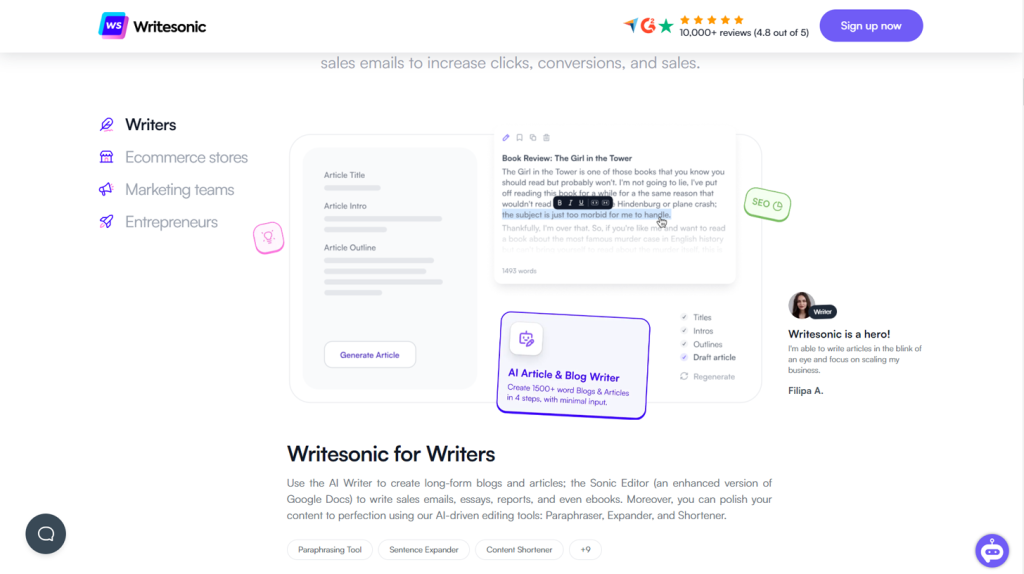
Another way that AI can assist writers during the creative process is by generating outlines. An outline helps a writer organize their ideas coherently before beginning to write the actual story. An AI-powered tool like Jasper uses machine learning algorithms to analyze existing works of fiction and use them as models for new stories’ structures. It generates story arcs detailing acts one through three’s structure, including key plot points and the main conflicts.
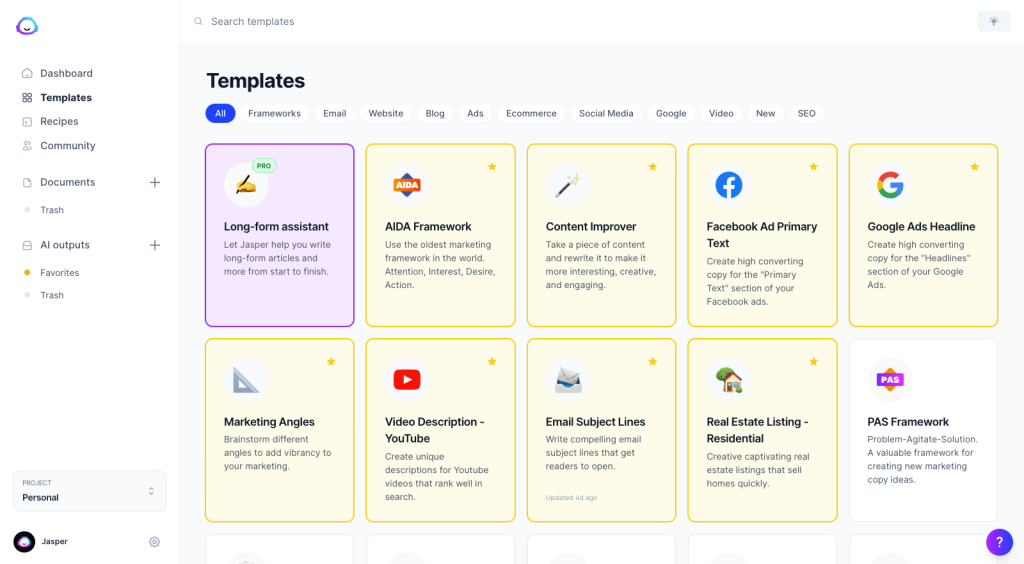
In addition to outlining, many AI-powered writing tools offer editing services to help writers refine their first drafts. These tools use natural language processing (NLP) algorithms to identify grammatical errors, passive voice constructions, repetitions in vocabulary usage, sentence structure issues, etc.
The most fascinating part of using AI in creative writing scenarios is its ability to create entire sections of narratives autonomously. While not yet able to develop complete works independently (at present), GPT-4 represents significant progress compared to previous versions in this application field; it can recognize literary devices such as metaphors and foreshadowing and generate storylines.
For example, Superscript is an AI-powered scriptwriting platform that helps writers craft their scripts with ease. It uses machine learning to analyze a customer’s screenplay content, check for plot holes or other structural irregularities and then suggest revisions for creative content improvement. The result is less time spent on the planning stage and more focus on the writing process.
However, while there are many benefits of utilizing AI in fiction writing, there are also several limitations that must be considered.
Limitations of AI in Creative Writing
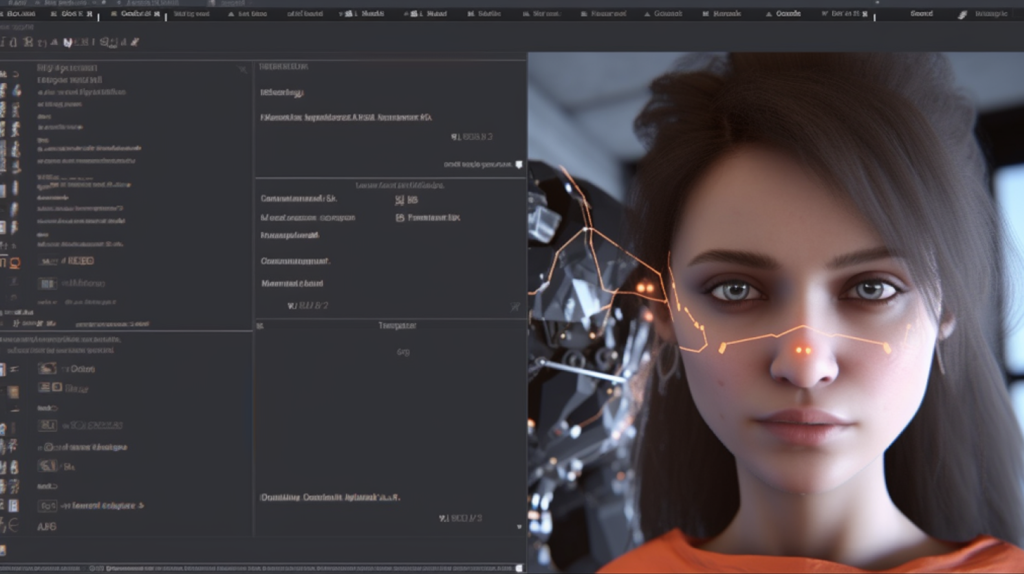
AI is a powerful tool that can assist writers throughout their creative process, but there are still some hurdles that AI technology cannot overcome in the writing world. One critical limitation is the inability of AI to understand human emotions accurately. While AI can recognize patterns and structures, it lacks understanding beyond its data-driven analysis and statistical interpretation.
One significant drawback of using AI for creative writing is the potential risk that it could discourage originality in storytelling. Those in favour argue that allowing machines to generate fresh ideas during the research and outlining process can inspire creativity and spark more of them. But a risk lies if over-relying on the non-human or algorithmic inputs leads to repetitive output. Thus eventually suppressing the audience’s appetite for unique perspectives, originality and niche variety without functioning exclusively Algorithm-generated works.
Another limitation comes from AI models’ training data bias means take little account of minority perspectives; focusing instead on popular culture tropes. A challenge inherent in these training sets concerns increased intersectionality issues or how multiple minority identities intersect within a work’s themes; gender identity, sexual orientation, mental health, etc. too frequently normalizing certain situations and marginalizing others.
Compare this situation to mixing paint colors – selecting only among particular options will always influence what comes out once they interact with one another. The more colors someone knows, the more diverse and nuanced their palettes will be – ultimately it’s the same applies to writers who can generate ideas from a more extensive range of experiences to expand their horizons.
Another limitation to AI in creative writing lies with how humans and machines interact when working collaboratively, something we might expect to become commonplace as AI increasingly enters writing arenas. While many companies have made considerable progress with AI-powered tools for writing, such tools must now optimize for human input rather than replace creativity entirely. Or else, they might end up just reinforcing existing problems like predefined racial and cultural biases.
Ultimately, while AI can assist writers throughout the creative process, it is not meant to replace them. Rather it allows them to focus on their passion for storytelling while supporting activities that require analytical or systematic comparison to material-extensive databanks. Humans bring meaning, voice and perspective; AI brings objectivity, organization and insightful feedback. In an era where creation timeframes shorten but multi-format publishing options multiply; a writer’s best ally is still his ability to adapt quickly and effectively leverage all available resources–whether produced by man or machine.
An AI-powered tool like On-Page AI will make such a great writing assistant for any novelist or screenwriter, most especially for those inevitable moments when you experience writer’s block. If you want to jumpstart your writing and let your creative juices flow, give Stealth Writer a try and see how it can help build your story.
Balancing AI and Human Creativity
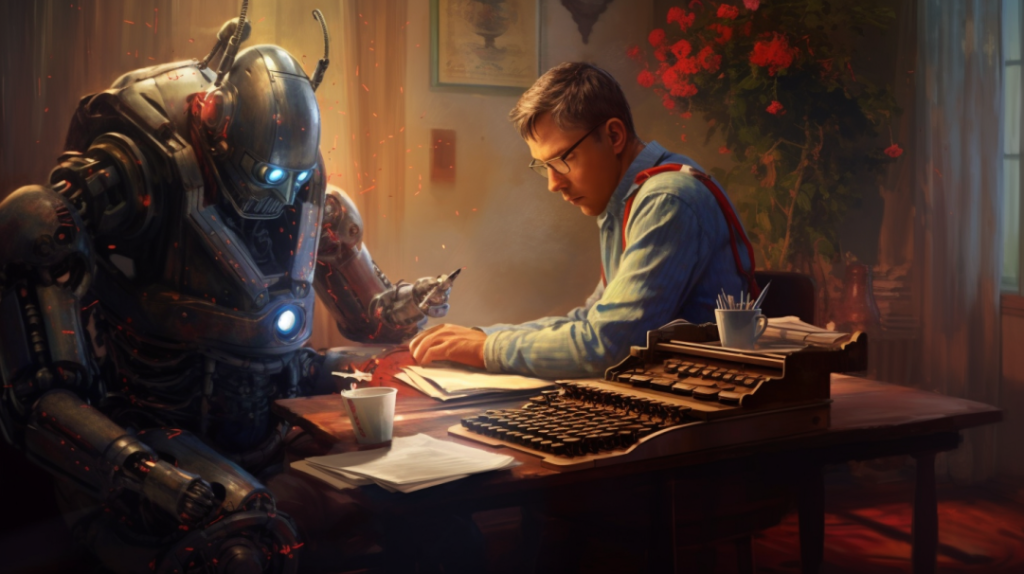
The question of balancing AI and human creativity in novel and screenplay writing remains a tricky one, and it is important to explore both the advantages and limitations of using AI tools in creative writing.
On the one hand, AI-powered writing tools can offer valuable assistance to writers who may be struggling with writer’s block, generating new ideas, or editing their work. For example, On-Page.ai’s Stealth Writer can quickly generate an article based on a keyword inputted by a user. This tool helps create well-written articles that pass the AI detection functionality powered by GPT4. Additionally, On-Page.ai’s On-Page Scans crawl sites like Google so its users can receive accurate data and recommendations for optimizing their website’s rankings.
These tools can save time and effort while providing suggestions for improvements that may not have been obvious to the writer. Moreover, by using AI to automate certain aspects of the creative process, writers can spend more time focusing on more nuanced elements of storytelling, such as building complex characters or exploring themes.
However, some argue that relying too heavily on AI tools can reduce the originality and emotional resonance of a piece of writing. While AI-powered algorithms are great at generating predictable and formulaic sentences and structures, they lack the nuance and creativity that humans can bring to a story.
Ultimately, striking a balance between AI assistance and human creativity may be key to producing truly great works of literature or screenplays.
For instance, acclaimed author Aliette de Bodard has spoken about her experience incorporating AI-generated text into her stories while retaining full creative control. By using these generated pieces as inspiration or as starting points for further exploration rather than as replacements for human creativity completely. This encourages story possibilities even if you don’t want to use all of it as material.
Moreover, it is essential to remember that writers hold final approval over any edits suggested or made by AI-powered tools. And that these tools can be adjusted and tailored according to a writer’s goals, helping to support their unique voice and vision.
Collaborative Future for Writers and AI
The future of creative writing may lie in collaboration between human writers and AI-powered tools. While AI alone cannot create works of literature or screenplays that capture complex characters and themes, it can offer valuable insights that may not have been apparent to the writer otherwise.
For example, AI algorithms can analyze market trends, predict audience responses, and identify plot holes or self-contradictory storylines―this helps improve the quality of a given script. Furthermore, as AI technology progresses into sophisticated chatbots and virtual prompts, they will be better at mimicking an author’s voice making them more contextualized in the writing process.
Collaboration between writers and AI tools can also help democratize the creative process by providing more access to resources that would traditionally have been limited to a select few. This could lead to more diverse voices within the publishing industry, and ultimately contribute towards a richer literary landscape.
However, while collaboration with AI offers opportunities for improvement and innovation in creative writing, it is also important to consider issues of ethics surrounding this relationship. Such as who owns the intellectual property generated by the collaboration? Who retains the rights about anything written? By using advanced AI writing suggestions from On-Page.ai for instance as inspiration for all copy contained in your article or screenplay then running it through another plagiarism detection engine one can ensure authenticity and security which in turn avoids ethical issues
Furthermore, as AI technology continues to advance, there are risks associated with perpetuating biased cultural narratives if the data patterns for analysis remain unchanged from traditional norms.
To think about this balance between human creativity and AI assistance one could imagine cooking as another practice where there is also room for collaboration between a chef and technology. Like a kitchen aid blender can be used to save time or achieve uniformity that the human hand may not accurately replicate as quickly, AI-powered writing tools can offer suggestions and efficiencies.
Frequently Asked Questions
Have any novels or screenplays been successfully written by AI?
Yes, AI has successfully written novels and screenplays in recent years. For example, in 2016, an AI program developed by the Japanese company, Fujitsu, created a short novel that made it through the first round of screening for a literary award. Also, OpenAI’s GPT-3 has produced various short stories that could pass as written by humans.
Additionally, some researchers have used AI to produce screenplays. In 2020, an AI system called “ScreenCraft” generated a screenplay based on an input prompt and script analysis. While the resulting screenplay wasn’t perfect and required editing, it showed great potential for AI-generated content in the future.
Although these achievements are remarkable, there’s still much more that needs to be done before AI can entirely replace human writers. A significant challenge is creating emotional depth within characters, something AI struggles with since emotions and personality are complex and volatile traits that go beyond algorithms’ capabilities.
In conclusion, while AI has made significant progress in generating novels and screenplays that sound human-like; it’s not yet advanced enough to develop cohesive plots or engage readers emotionally. Thus we should view AI writing more as an innovative tool for assisting professional writers than as a total replacement for them.
What ethical considerations should be taken into account with the use of AI in creative writing?
The emergence of AI in creative writing raises a number of ethical considerations that cannot be overlooked. For example, one of the main issues is plagiarism: if an AI program borrows from other works, it’s unclear whether it’s breaking any copyright laws or not. Additionally, there is a possibility of AI-generated hate speech or misleading news that could harm society.
Furthermore, we must consider the biases built into the programming of current AI. If the training data does not represent all types of people equally, there is a high likelihood that the resulting text will contain biases and discrimination against certain demographics.
Lastly, we need to examine the impact on human writers and publishers in terms of their livelihoods. With AI capable of producing work more efficiently and at a lower cost than humans, this may threaten employment opportunities within the industry.
Whilst some may argue that these concerns are exaggerated and that AI has already been implemented in many forms today, a Pew Research Center survey found that 65% of Americans aren’t ready for robots to write news articles by themselves nor are they comfortable with major decisions being made with AIs (Anderson and Rainie, 2018).
In short, ethical implications need to be considered when integrating AI into creative writing. Unintended consequences such as plagiarism, biased content, spreading false information or economic inequalities among human writers must be addressed for a balanced approach toward implementing this technology.
Can AI truly emulate human creativity and emotion in writing?
The short answer is, not quite yet. While AI technology has advanced significantly in recent years, emulating human creativity and emotion in writing remains a challenge for many reasons.
First, creativity requires imagination, a uniquely human trait. AI systems do not have natural experiences or emotions that fuel creativity, so they rely on algorithms and pre-programmed data sets to generate content.
Moreover, emotional intelligence plays a vital role in storytelling and creative expression. While AI models can analyze and identify emotions in text and speech, they struggle to interpret and convey complex emotions with the nuance and subtlety of human writers.
Despite these limitations, AI-generated writing has shown remarkable progress. GPT-3 (Generative Pre-training Transformer 3), an artificial intelligence language model that can create human-like text from prompts, produced an entire article for The Guardian last year that was mistaken for the work of a human writer.
As AI technology progresses, it’s becoming more and more possible to emulate human creativity. No wonder articles generated by the Stealth AI Writer don’t sound robotic and are quite engaging.
However, humans still play a critical role in storytelling and creative writing. A study conducted by the Royal Society of Literature found that while people are generally open to reading books written by robots, most still prefer works created by human authors.
In conclusion, AI has made significant strides in generating written content but still lacks the ability to fully emulate human creativity and emotion in writing. The future may bring new breakthroughs in AI technology that could narrow this gap further, but for now, it seems we will continue to rely on talented human writers for truly emotional and creative storytelling.
How advanced is the technology for AI writing?
AI writing technology has come a long way in recent years, and its advancements have been notable. While still not at the level to completely replace human writers, AI has made significant strides in generating content for news articles, social media posts and even short stories or screenplays.
Several organizations are investing heavily in AI writing tech to improve its capabilities. OpenAI’s GPT-3 is one of the most advanced language-generation AI’s to date, with over 175 billion parameters. It can generate human-like texts that often fool readers and pass the Turing test in some instances.
Furthermore, AI writing tools like Articoolo, which uses machine learning algorithms to produce high-quality content automatically, have become widely used by businesses needing content creation in bulk. This shows that AI can perform some functions usually done by humans and reduces the demand needed for content creators.
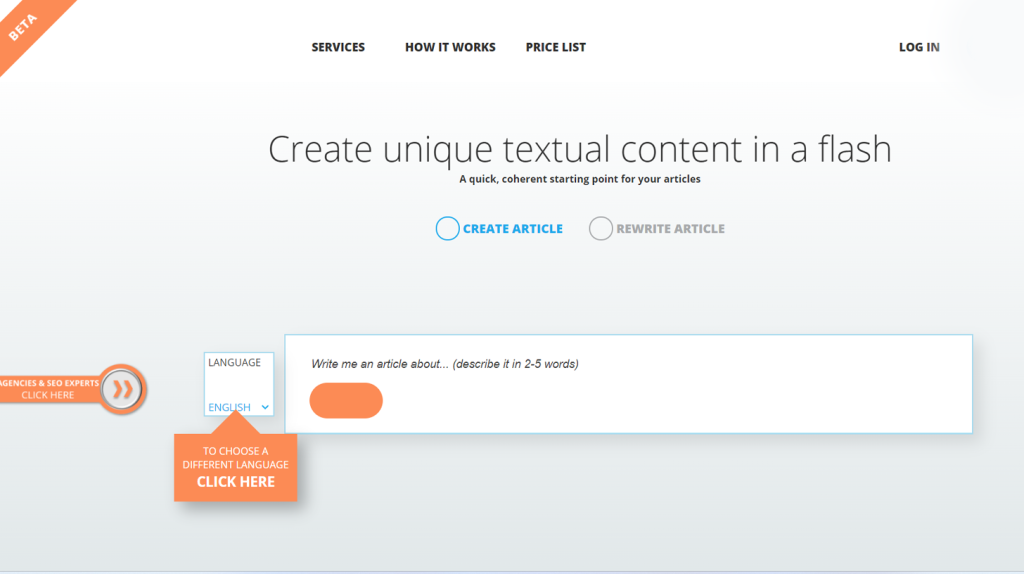
However, there are limitations to what AI writing technology can do currently due to a lack of understanding of human emotions, cultural context, and creativity. Also, they tend to only be useful for short-form writing as using them for longer formats creates a lack of consistency in context within the piece.
In summary, although AI writing technology has made significant progress and is becoming more sophisticated with every day that passes, it is still not advanced enough to match human-level creativity and experience when it comes down to crafting more complex works such as full-length novels or feature film screenplays. Nonetheless, with advances being made continuously within this area, this could well be possible shortly.
Instead of worrying about AI technology replacing human creativity, let’s work with it and maximize its benefits. I dare say let’s focus on how AI-powered content tools like On-Page AI can be a reliable and efficient solution for most writing tasks, including novel and screenplay writing.
Register today if you’re keen to have a sophisticated AI-writing assistant that will help you create and optimize different types of content pieces–whether for your book, blog, website, etc!

